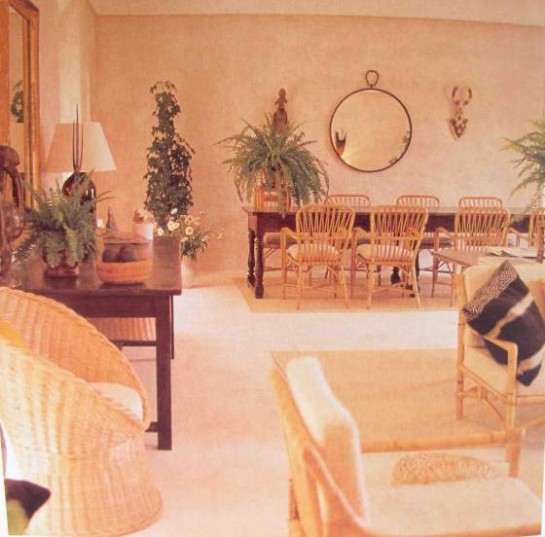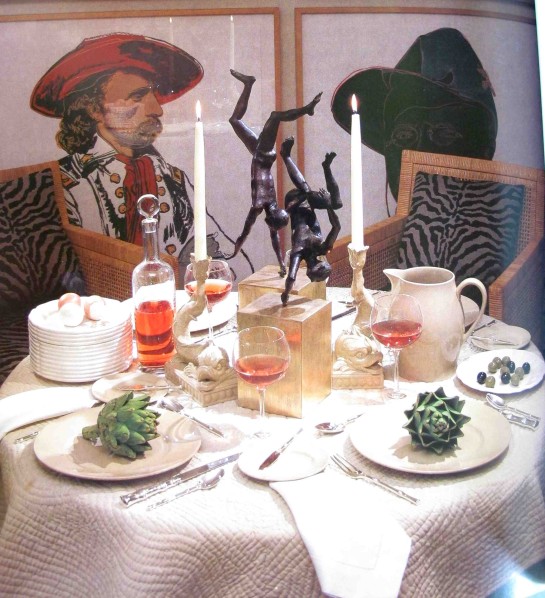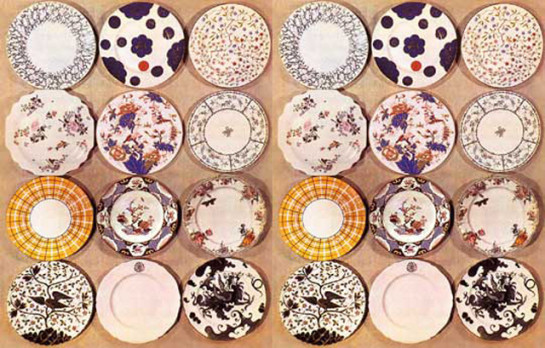…………………………
“Good design is forever”
– Van Day Truex
…………………………
Sometimes we come across an influential figure in any given field, and though we may know their name, we don’t actually know what their contribution has been. This may be the case with Van Day Truex. He was a pivotal figure in the field of interior design, whose legacy began on the first day he arrived in New York City in 1923. Here was a young man full of enthusiasm and courage to pursue his dream.
Despite the heated disapproval of his father, Van came to embrace all that his father despised about the metropolis. To say that he had landed in a pot of gold would be an understatement. From the start of his journey, he had the opportunity to not only become associated with, but to become friends with some of the most creative and influential personages of the day.
His story is one for the fairytale books. The roster of individuals who played a role in his development, and later success, is astounding to say the least: from Frank Alvah Parsons (the founder of the design school that bears his name) to William Odom, Elsie de Wolfe and Diana Vreeland – the list is endless – all were major patrons, friends, and influencers in this man’s life and career.
The sitting room of Truex’s home in Provence
…………………………
His illustrious career positioned him as designer, educator, and leader in the field. He has been regarded by many as the father of twentieth-century American design. While he headed Parsons School of Design, it became the preeminent design school for interiors and fashion in the States, and therefore established a notable legacy by way of those students who were privileged to study there.
His most noted contribution was his tenure as design director for Tiffany & Co. While he was with the firm his experiences living abroad, his refinement of style, and his vast knowledge of the arts and design elevated and refined American taste. In fact it is known that Walter Hoving insisted that Truex not be concerned with what might or might not sell – but to focus on the creation of tasteful and beautiful products, nothing more.
A Tiffany table setting featuring Wedgwood drabware, Truex’s Bamboo silverware and decanter
…………………………
This would be an opportune time for me to suggest you consider reading the book written by Adam Lewis, which is a treasure trove of facts and antidotes on the man. It’s a great read and I highly recommend it. I trust that it will be one that you will take inspiration from.
In researching this article I came upon a real find, the “Oral History interview with Van Day Truex, November 15th, 1971, Archives of American Arts, Smithsonian Institution“ Follow the link to read the complete interview. Here are a few excerpts to consider, what better way to know more about the man than hearing his own words;
“We didn’t bother too much, that was not the Parson approach. I got George Nelson in there as head of the school you see. I became head of the school after the war. When the war broke out I was the director of the Paris School and I was vice-president. Parsons was dead and Odom was the head, and then Odom died in 1942 and I was made the head of the school. The Paris School closed and I was made the head of the school and I remained the head until ’52 when I resigned. I was the one to relate the school much more to the contemporary scene in a sense by getting George Nelson and the people just beginning in to talk to the students in interior design. We were becoming more technical in that sense, recognizing more of the various avenues that the design students could go into. But basically our approach was always motivated and controlled by, let’s give them as much as we can in the sense of eye, in the sense of quality and the sense of style.
I’ve always said about my own career, for what it is, that the thing that saved me was at the age of 19 I went to Paris and I grew up in Paris. Where would I be if I came back here? Who would I have known? I’d be up and down Second and Third Avenue. I never knew it, and never have known it. I grew up in Paris and by the time I came back to New York (and I suppose I’m typical in a way of a Parsons graduate) to live I knew a pretty good sampling of the most attractive people in New York through Paris. I knew my attractive New York friends through Paris and when I came back I not only was in contact with the fashionable design world but the fashionable world itself you see, so I brought, I continued to bring, that into the school.
I listened politely (I knew him as I knew a lot of people) and when he finished I said, “Well listen Gilbert Chapman, this is a compliment but it is absolutely impossible.” I call everything a whose-it, I don’t know how anything works – I don’t know how anything works. I’ve never been able to use a scaled ruler even as head of the Parsons School of Design. I said it’s ridiculous, I couldn’t possibly consider it. He said “At Valley Forge we have our patent group of industrial designers and engineers and all of that, they know the answers to everything, we want a different point of view. What’s happened to hardware? Look at it, there’s no quality.” I said “You mean I could call everything a whose-it? I don’t have to know how anything works?” “Of course you don’t, they know how it works. I want a look, we want ideas.” I couldn’t refuse. Two years later we put on that show at Rubenstein … I was given carte blanche to do anything I wished or to commission. I went to Noguchi and Philip Johnson and Lipschitz and you know everybody and got what I could.
China patterns commissioned for Tiffany & Co. under Truex’s direction
“If I could sum up what has helped me to get on as well as I have it’s that I think I have been both objective and subjective, and I’ve had the fortunate experience of having contacts over the years with people of design, judgment, and taste, both privately and professionally and lived the number of years that I have as much a part of the European scene as a part of the New York Scene. So I’ve been able to be absolutely aloof in a sense, as I’ve looked on, above all the New York scene – which of course is the most killing, concentrated, promotional scene of its kind.
And I think often the whole promotional force can be more destructive than constructive, design wise.”
…………………………
How apt that his closing comments are still true today. What do you think about them? We here on the blog welcome your comments.
.
Written by Carl Lana



